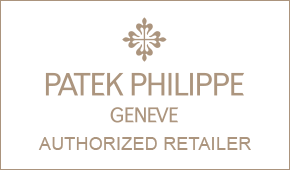The world of diamonds and their different cuts can sometimes be a very confusing world to discover for the first time.

Whilst we are extremely proud and confident in all our ambassadors and their ability to talk you through the different types of cuts that are available to you, we thought we might help give you a stepping stone introduction into the different aspects of diamonds, from their cut and clarity to their colour and what the amounts of carats means for your perfect diamond.
Cut
Here we are referring to a diamond’s proportions and how it has been cut from its original form. When a diamond is cut, facets are created and the diamond’s finished shape is determined.
When people refer to cut they can often be referring to the shape of the diamond – emerald cut, princess cut etc. – but it also refers to the quality of the cut, which impacts greatly on how the diamond sparkles. The quality of a diamond’s cut will impact the way the stone looks. Remember diamonds start their lives as rough, dark looking stones and it is the expertise involved in cutting diamonds that gives the stones their sparkle. The facets catch lights in different ways, and depending on how the light hits certain parts of the stone it is then reflected back out at varying intensities, so the type and the quality of the cut are super important factors.
When cutting, there are certain guidelines that cutters should stay within. On the lower grades of cut (such as fair, or good) the cutter has chosen to stray outside of these guidelines, so although the shine and fire may not be as good as it can be – you’ve saved more of the diamond so the size is larger. An excellent grade cut will be on par with typical cutting guidelines, so more of the size will have been lost in order to have optimal shine.
Clarity
This is the measurement of a diamond’s imperfections or inclusions that are seen in the diamond. Clarity begins with Flawless (IF – 10x) and moves to Very Very Slight (VVS -10x), Very Slight (VS- 10x) and Slightly Included (SI-10x) and finally Included.
Of course it may not be your taste to have a flawless stone, most people fall in love with the imperfections and the flaws of their ring, just as they do with their loved ones. We’re all only humans, and diamonds are only rocks.

Colour
Subtle colour differences allow gem quality diamonds to be graded from the prized, totally colourless stones, to the highly prized fancies. In a white stone you want as little colour to be present as possible. Think of it much like glass, the less colour that is present in the glass the more light can shine through. This is very much the same with diamonds. A colourless stone allows light to shine through and is a real treat for the eyes.
Colour ranges start at D (totally colourless) and go all the way through to Z. So what’s the safe zone? Everyone ideally wants to bag themselves a D, but really until you hit F you’re still getting a fairly breathtaking stone and it would take someone with a very well trained eye to spot the difference. It’s only when you get up to say, I that you start to really see a bit of colour come through. And, again, as with anything, preference is key – some people may prefer a warmer stone and that’s ok.
Carat
This is the measurement by which diamonds are weighed. Starting at 0.5 carat, they can range to about 5 or 6 carats (for the Elizabeth Taylor looking rings). You may think that the price of a diamond would be relatable to its weight (2 carat stone would be double the price of a 1 carat stone). Whilst logic would tell you this makes sense, when it comes to diamonds it just isn’t so. Due to the very nature of how diamond stones are made, the majority of stones are very small in size. They then have to be cut to certain dimensions to increase their shine, which of course cuts away at its size. So large carat diamonds are incredibly rare, which of course means the price increases the larger you get, but they don’t necessarily double or triple with each additional carat.


Showrooms




